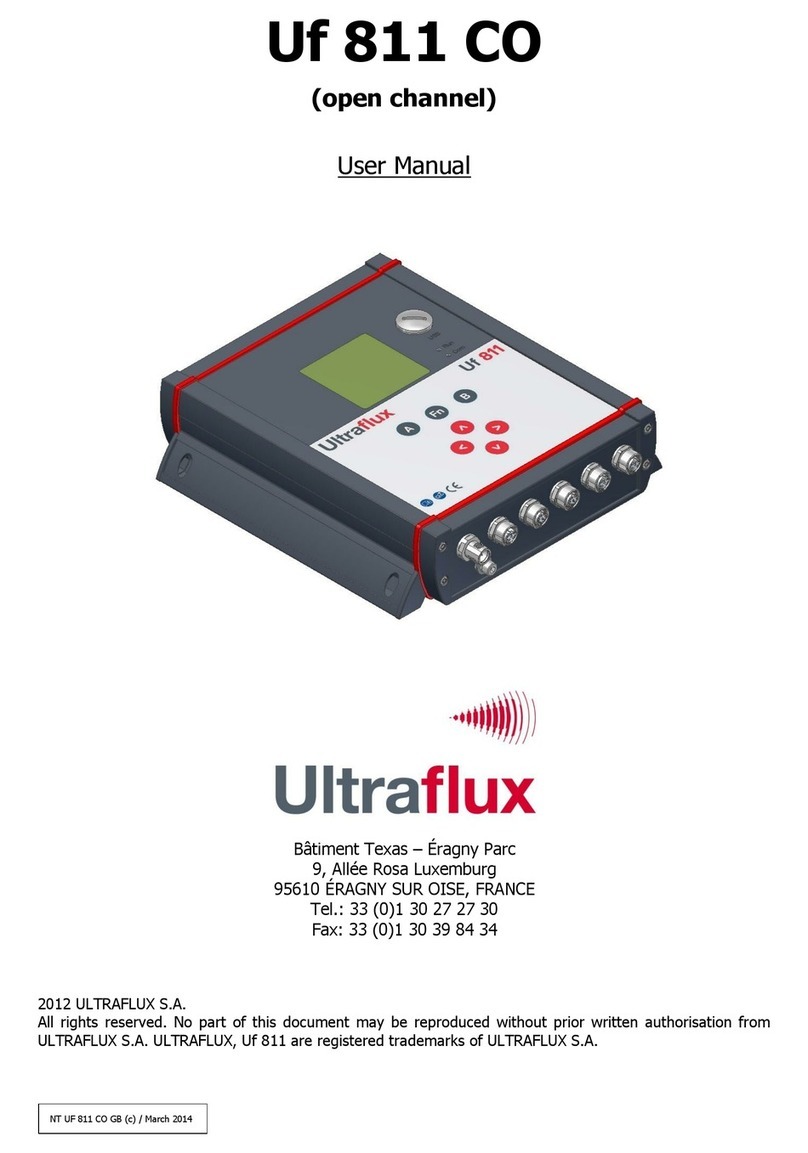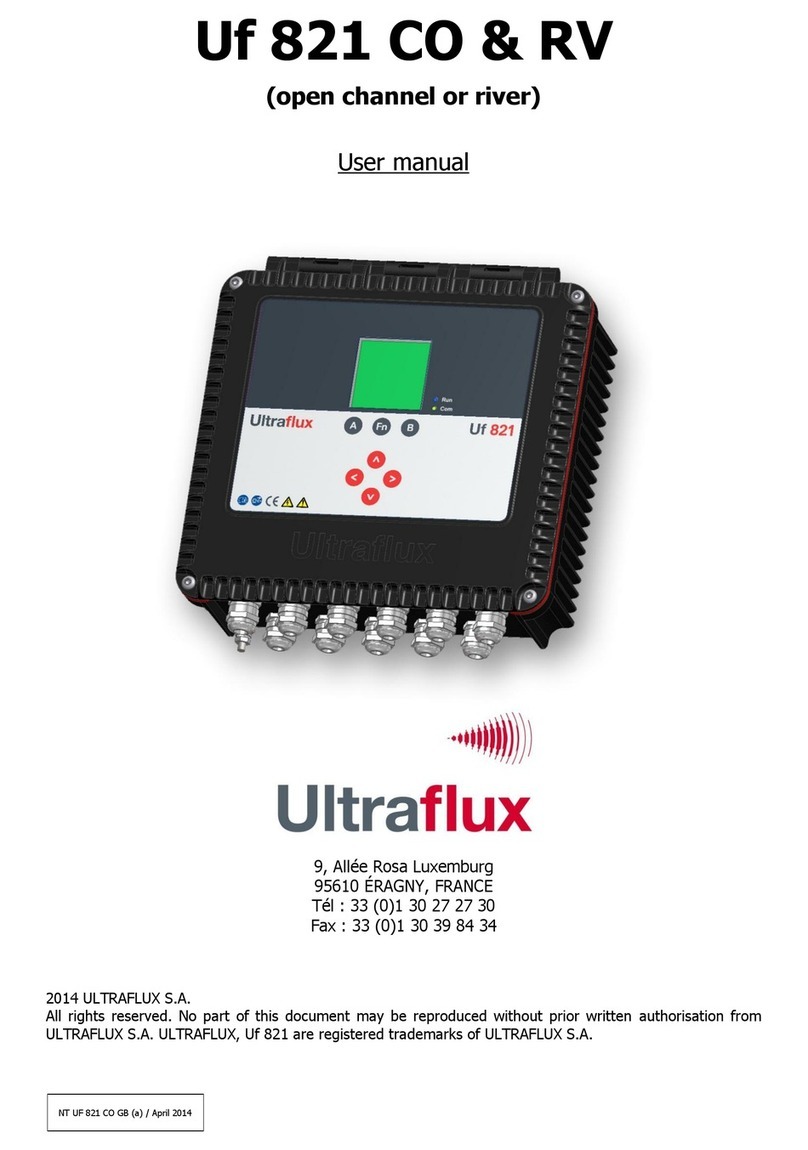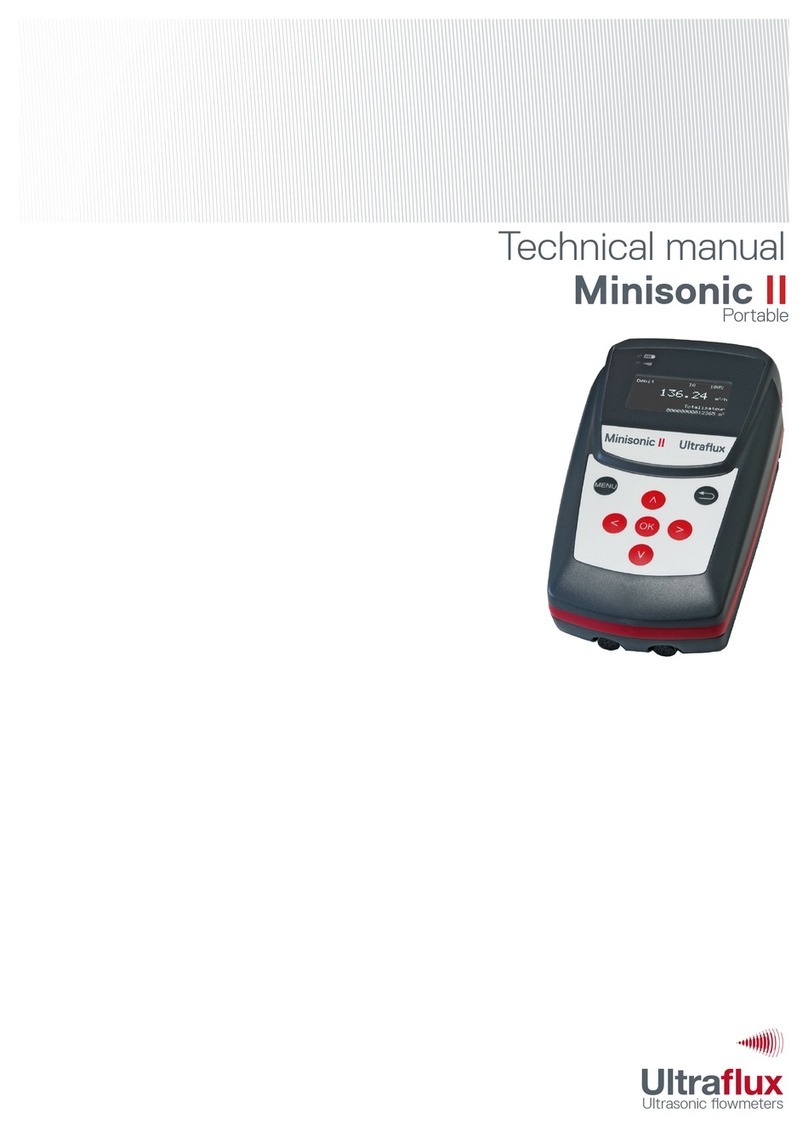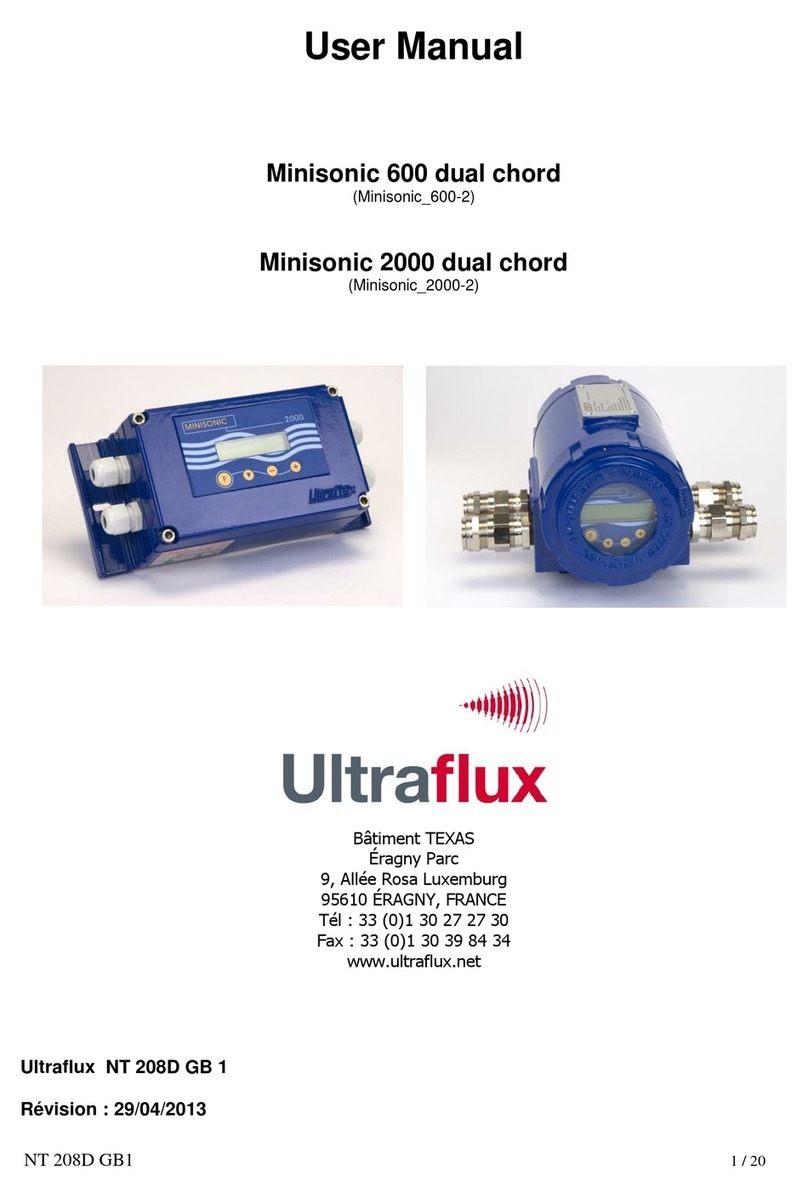
3
NT UF 831 CO GB (b) / March 2014
TABLE OF CONTENTS
Note: A detailed table of contents is provided at the end of the manual.
Important: If you are unfamiliar with the transit time difference measuring technique, we recommend you start by
reading our training manual "Ultrasonic transit time flowmeter".
CHAPTER 1: OVERVIEW ........................................................................................ 5
1.1 Inputs/Outputs ...................................................................................................................6
1.2 Communication with the flow meter......................................................................................6
1.3 Recording possibilities .........................................................................................................6
1.4 Echo display .......................................................................................................................6
1.5 Other functions available .....................................................................................................7
1.6 Accuracy and availability......................................................................................................7
1.7 Dimensions and weight........................................................................................................7
1.8 Supply ...............................................................................................................................8
1.9 Protection against dust and immersion..................................................................................8
1.10 Power supply....................................................................................................................8
1.11 Environment for use of the cabinet .....................................................................................9
1.12 Cleaning the flow meter.....................................................................................................9
1.13 Composition of a measuring point.......................................................................................9
CHAPTER 2: SAFETY INSTRUCTIONS ................................................................. 10
2.1 Symbols used on the flow meter......................................................................................... 11
2.2 Assembly ......................................................................................................................... 11
2.3 Wiring.............................................................................................................................. 12
2.4 Using the flow meter......................................................................................................... 12
2.5 Recycling the flow meter ................................................................................................... 13
2.6 Contact address................................................................................................................ 13
CHAPTER 3: INSTALLATION AND WIRING......................................................... 14
3.1 Opening the cabinet.......................................................................................................... 15
3.2 General procedures........................................................................................................... 16
CHAPTER 4: IMPLEMENTING A MEASURING POINT.......................................... 22
4.1 Choosing the measurement location ................................................................................... 23
4.2 Installing the probes ......................................................................................................... 23
4.3 Measurements to be taken on site ...................................................................................... 24
4.4 Analysing and processing data measured on site.................................................................. 24
4.5 Transferring the data collected to the converter................................................................... 25







































